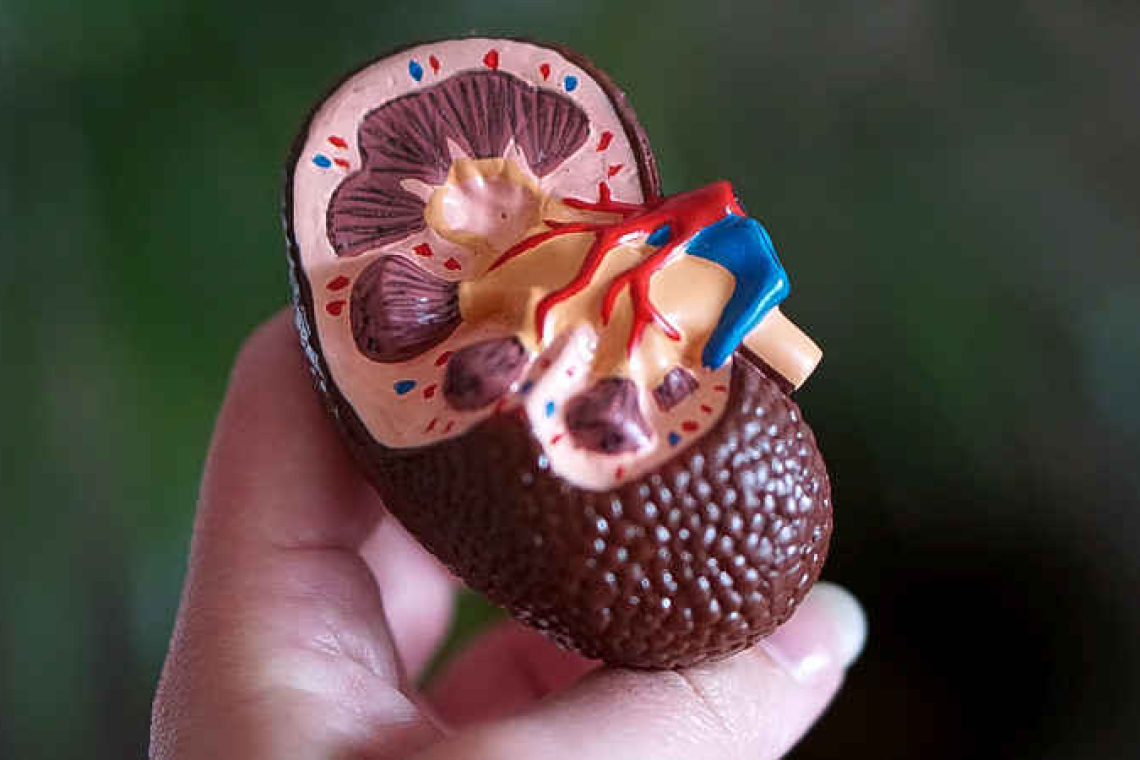By Colin Michie
Few physical problems come with quite the same threat as kidney stones. They often cause excruciating pain – said to be worse than giving birth.
Kidney stones are becoming more common. Recent reviews in Trinidad suggested 15-20% of adults were affected, several percentages higher than quoted in texts 30 years ago. Case rates are even higher in hotter countries; climate change is not helping! Stones are more common in adults of a working age and in those with a family history of them. The good news is that women are usually less likely to suffer than men; their particular hormonal environment reduces stone development. But women with type 2 diabetes in particular are more likely to suffer from stones, a diagnosis that is narrowing this gender gap.
Kidney stones or gravels come in several different types. The most common, particularly in men, are made up of calcium oxalate or alternatively uric acid. These are more often found in those with obesity, cardiovascular disease, fatty liver and diabetes. Struvite stones are composed of magnesium salts; these tend to be more common in women. Some stones run in families, because of a genetic predisposition in metabolic transport systems – for instance, those made of cysteine. Those with gout are more likely to develop stones made of uric acid. The first stone is often followed by another – the recurrence rate of these is high.
Most kidney stones are 1-2mm in size, but they can reach several centimetres across. In the kidney, they cause colicky or spasmodic pains in the lower back that moves to the belly when they are passed down the ureters into the bladder. Stones cause bleeding into the urine and blockage of the narrow ureters; they scar precious kidney tissues, even if they are painless.
Although they have plagued mankind since earliest records, the exact causes of stone formation are often unclear. Our kidneys work as high-volume exchanges and filters, carefully conserving salts and water, maintaining an acid urine while getting rid of unneeded toxins. Healthy urine contains only tiny amounts of proteins, no blood or white cells. Metabolites of caffeine, nicotine or cocaine will be excreted, valuable proteins retained. Our diets and fluid intakes are crucial in supporting this finely tuned process. For instance, dehydration increases levels of toxins such as uric acid and oxalates in the kidney: super-saturation and crystallisation may then develop in their laceworks of fine concentrating ducts. Infections can contribute too, as bacteria can break down the defences of cells lining the kidney and ureters. Stones damage kidney function and reduce quality of life if untreated, increasing blood pressure and chronic kidney disease.
The approach for all of us should be to protect our kidneys by preventing stone formation. Drinking sufficient water to keep your urine a light yellowish colour is a start. This works as losses from sweat can be larger than you expect. High-fibre diets with relatively low salt and proteins, vegetarian or Mediterranean diets are all sensible for renal happiness. Prescription medications for high uric acid levels are very helpful. Other dietary modifications show variation in their effects when tested on many individuals. Citrus fruits and melons, in moderation, may protect against stone formation. Spinach, chard, rhubarb, nuts, cola and chocolate may be worth restricting because these foods are high in oxalates. Limiting calcium (for instance in dairy products) seems logical, but is ineffective in most folk and may damage skeletal health, particularly in the elderly.
Traditional medical approaches for renal stones are many and varied. Whether it is sorrel, ginger, mallow, sarsaparilla, nettle leaf, dasheen or camomile, it is unclear from doctrines of signatures, commonplace books or health blogs as to how much of which plant is required. Many botanical “cures” are encouraging, though, because their parent plants contain potentially protective molecules. Such products ideally could be designed to prevent stone recurrence and improve kidney healing or regeneration, a subject in its infancy. By contrast, taking olive oil or sports drinks (both common approaches on the island) have been found unlikely to be helpful!
Surgical treatments for stones evolve and improve steadily. Once imaging scans find the stone, it may be broken up with shockwave lithotripsy (ultrasound), removed by open surgery (an abdominal operation), or extracted using slender optical fibre telescopes passed through the bladder and up to the kidney. Laser treatments delivered through these telescopes are provided by some urologists. A rare earth thulium laser employed in this way causes less heat, more stone shattering and less tissue damage.
Kidney stones will trouble many in our communities, mostly men. In order to care for our kidneys, we need to observe some basic rules ourselves and try to improve access to effective systems and services to treat them.
Useful resources:
https://www.nhs.uk/conditions/kidney-stones/
https://www.niddk.nih.gov/health-information/urologic-diseases/kidney-stones







